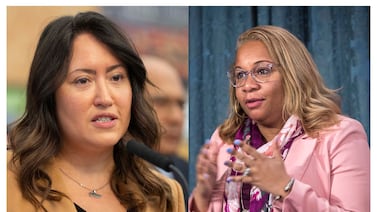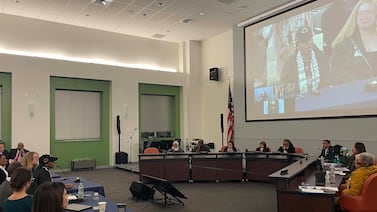Black and male teachers in Tennessee have received lower classroom observation scores than their white and female peers every year since the state launched its teacher evaluation system in 2011, says a new study.
The same gaps show up even when comparing similarly qualified teachers whose students achieve similar test score gains.
The findings, released Monday and mirroring national research, raise important questions about the reliability and fairness of the state’s teacher evaluation system. They also highlight concerns that the observation experiences could drive Black and male teachers out of the profession at a time when Tennessee seeks to diversify its teacher workforce.
Tennessee was among the first states to adopt comprehensive teacher evaluations to help educators and schools improve as part of state and national reforms. The high-stakes results inform decisions by school administrators about compensation, retention, and other personnel matters.
Classroom observation scores are the most important component and comprise up to 70% of a teacher’s final score, which also incorporates student achievement data. The resulting rating of 1 to 5 aims to gauge a teacher’s level of effectiveness, with 5 being the most effective.
The system has always been controversial, especially Tennessee’s early use of student test data to help rate teachers. More recent attention has focused on the quality of classroom observations.
“We want observation scores to give accurate information about teachers’ effectiveness in the classroom and not to reflect other factors beyond the teacher’s control,” said Jason A. Grissom, one of the authors of the new study from the Tennessee Education Research Alliance, a partnership of Vanderbilt University and the Tennessee Department of Education.
The president of the state’s largest teacher organization said the data isn’t surprising.
“This should force a much-needed conversation about unconscious bias in our evaluation system,” said Beth Brown of the Tennessee Education Association, which has called for an annual review.
The study offers few clues on what’s driving the gender gap in observation scores. However, the magnitude of the race gap is influenced by several factors, including the racial composition of the school’s faculty, differing characteristics of students who are assigned to Black and white teachers, and the race of the teacher’s observer.
Black teachers receive slightly lower ratings from white evaluators, and the gaps are larger in schools where a Black teacher has fewer Black colleagues.
Also, the study found that Black teachers are assigned higher numbers of students with a history of disciplinary problems, lower attendance, and lower achievement.
A national study in 2018 found similar results and suggested that evaluations are one reason teachers may be deterred from working in classrooms where students lag farthest behind. It also raised questions about whether teachers of color — who often work most frequently with students of color — are getting a fair shot, especially when a growing body of research shows that a racially and ethnically diverse teaching force can have positive impacts academically, socially, and emotionally on students of all races.
This school year, Tennessee began requiring school districts to set goals and strategies to get more teachers of color in front of students. The new policy prompted the research alliance to dig deeper into observation score data broken down by race and gender.
“As we work to increase teacher diversity in Tennessee, it is critical that we understand more about the causes of these systematic differences so we can begin to address them,” said Erin O’Hara, the alliance’s executive director. “Are there potential changes needed in the observation rubrics, for example, or in training of evaluators?”
Tennessee trains mostly school principals and assistant principals to observe and score their teachers. A state-approved scoring guide focuses on instruction, planning, professionalism, and classroom environment.
The researchers say school leaders should receive regular training on potential sources of biases in their teacher evaluations. They also recommend administrators examine school-level data on student placement to guard against systematically assigning lower-achieving students and those with disciplinary challenges to Black educators.







